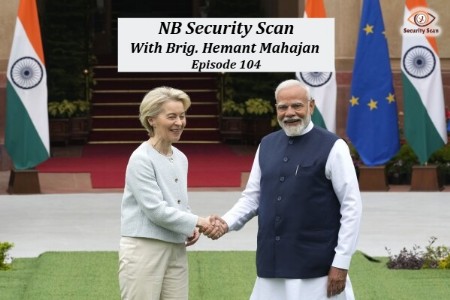#SecurityScan 87: Terror Attack In J&K’s Reasi, Anti-Indian Media in Europe and more
While Europe and America face demographic, security , economic challenges which they are not able to handle, their media maintain an outdated perception of their dominance over India.
Total Views | 1076
This article is a summary of important events that have taken place in last one week affecting, India's national security.
Countering Internal & External Security Challenges
Anti-Indian Media in Europe and America vs. Pro-India Political Leadership
Many major news channels and newspapers in Europe and America expressed satisfaction when Prime Minister Narendra Modi's party did not secure a majority. Western media have often portrayed India negatively, largely because they struggle to accept India's rapid progress.
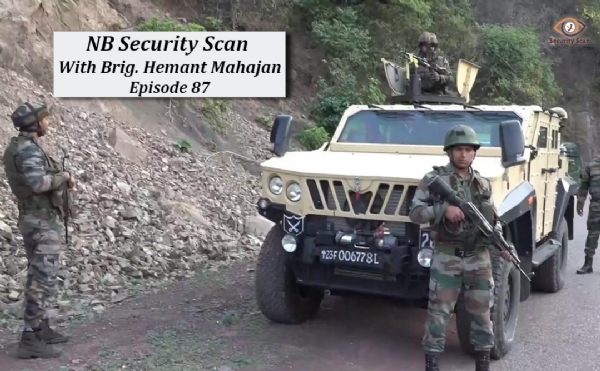
There is a lingering colonial mindset within these media outlets, who believe their fair skin grants them the authority to lecture India, as if they are still colonial rulers. While Europe and America face demographic, security, economic challenges which they are not able to handle, their media maintain an outdated perception of their dominance over India.
In contrast, the political leadership in Europe and the USA recognizes India's growing economic and strategic importance. They understand that strengthening strategic, defense, and economic relations with India is crucial, as India emerges as a significant alternative to China. This understanding drives a more favourable and cooperative stance towards India from the political leadership in these regions.
Terror Attack In J&K’s Reasi That Killed 9 Hindu Pilgrims Poses Security Concerns
At least nine Hindu pilgrims died and over 30 were wounded after terrorists opened fire on their bus, which then fell into a gorge in Jammu and Kashmir’s Reasi district. The hunt is on to find the perpetrators of the deadly attack, with reports claiming that The Resistance Front (TRF), an offshoot of Pakistan-based terrorist group Lashkar-e-Taiba (LeT), has taken responsibility for the incident.
The deadly terror attack in Jammu and Kashmir’s Reasi district has shocked India. At least nine people died and 33 were injured after terrorists fired upon a bus carrying Hindu pilgrims, resulting in the vehicle plunging into a deep gorge on Sunday (9 June).
The tragedy came on the day Narendra Modi and his 71 Council of Ministers took the oath of office at the Rashtrapati Bhavan in Delhi in a grand ceremony.
Was Pakistan’s ISI Involved in the Nepal Royal Massacre of 2001?
A new book co-authored by a former Indian ambassador to Nepal claims that Dawood Ibrahim, with the support of the ISI, instigated the crown prince to kill King Birendra and others.
#COUNTERING CHINESE MULTI DOMAIN , GREY ZONE, HIGH BREED WARFARE
US and ‘Five Eyes’ allies warn that China is recruiting Western military trainers
Pilots are being lured with offers of ‘tonnes of money’ and the chance to fly exotic aircraft, a US official says.
Vietnam's Spratly Expansion Accelerates
Rapid Land Creation in the South China Sea to counter China
Vietnam has created 692 new acres of land in the South China Sea over the past six months, as revealed by satellite imagery showcasing Hanoi's intensified efforts to expand its outposts in the Spratly Islands to guard against Chinese.
Unprecedented Expansion Efforts
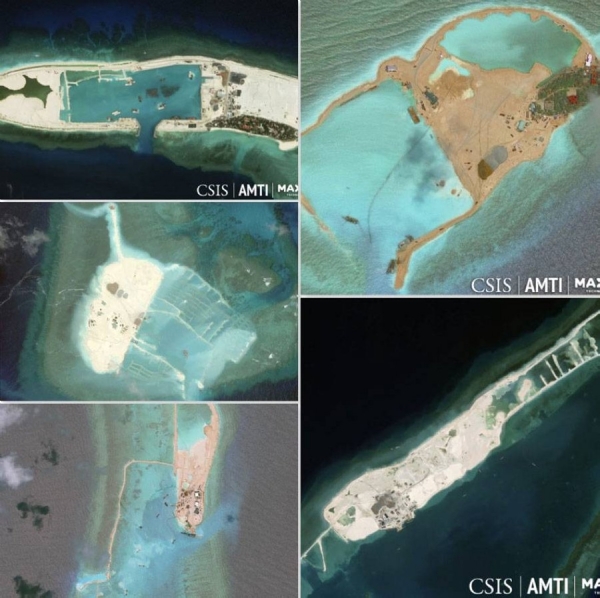
Vietnam's expansion in the Spratly Islands has significantly accelerated, with almost as much new land created in the last six months as in the previous two years combined. This rapid pace sets Hanoi on track for a record year of island building in 2024.
Recent Developments
Vietnam has developed 692 new acres of land across 10 features. This compares to 404 acres created in the first 11 months of 2023 and 342 acres in 2022. In total, Vietnam's dredging and landfill activities in the disputed areas of the South China Sea now cover approximately 2,360 acres—about half of China's 4,650 acres. This marks a significant change from three years ago, when Vietnam's total dredging and landfill efforts amounted to just 329 acres, less than one-tenth of China's total.
Strategic Outpost Expansion
The scale of Vietnam's activities is evident when examining the largest outposts in the Spratly Islands by land area. While China’s "big three" outposts—Mischief, Subi, and Fiery Cross reefs—remain the largest, the next four largest outposts are all newly expanded Vietnamese reefs
Responding to a More Coercive Chinese Coast Guard and a Potential PRC Quarantine of Taiwan
Given the increasing plausibility of a Taiwan quarantine scenario, Taiwan, the United States, and U.S. allies and partners (especially Japan) should develop more effective tools and strategies for responding.
Strengthening Taiwan's Coast Guard
Taiwan should expand its coast guard to be a more effective counterweight to the Chinese Coast Guard (CCG). In 2018, Taiwan initiated measures to build up its coast guard by 2027, including constructing 141 new vessels. President William Lai’s administration, which took office on May 20, should ensure the continuity of this program with minimal disruption and consider additional options to enhance its coast guard forces.
U.S. Designation of the Chinese Coast Guard
The U.S. government should take decisive measures in response to the CCG's actions. First, Washington should designate China’s coast guard as an arm of the People’s Liberation Army (PLA) and launch a major diplomatic campaign to persuade allies and partners to adopt the same stance. This effort aims to counteract international perceptions that the CCG is a nonmilitary organization and to prevent China from leveraging these perceptions to engage in illegal, coercive, and aggressive activities. Washington should clearly and publicly state that a military response to CCG coercion is both possible and legitimate.
Increasing U.S. Coast Guard Presence
The United States should increase its coast guard presence in the region. Although the U.S. Coast Guard maintains a sizeable overseas presence, its Pacific forces cover a vast area. Concentrating more forces in the Western Pacific would enhance Washington's capacity for training and regional engagement, including cooperation with Taiwan under existing law enforcement functions. A larger U.S. Coast Guard presence would also provide more tools for responding to a Gray zone contingency involving the CCG. This expansion would require an explicit decision to use the U.S. Coast Guard more prominently as a foreign policy instrument.
Encouraging Allied Cooperation
The United States does not need to act alone in deterring and responding to a potential Chinese quarantine operation. Washington should encourage allies and partners to similarly designate the CCG as an arm of the PLA and authorize military responses accordingly. Additionally, the U.S. should seek to strengthen and increase cooperation with Taiwan’s coast guard, and encourage other allies and partners, such as Japan and the Philippines, to do the same.
Engaging allies and partners in dialogue about the necessary authorities to respond to PRC coercion below the threshold of military conflict involving the CCG is crucial. For instance, Japan should consider granting its coast guard greater authority to assist Taiwan during a gray zone quarantine, in consultation with Washington. The United States and Japan can share best practices on responding to CCG and PLA activities and conduct joint exercises to explore breaking a quarantine or establishing a preventive corridor.
China Grey Zone quarantine
One major step China could take is a “gray zone” quarantine led not by its People’s Liberation Army (PLA) but by its coast guard and other law enforcement forces. Rather than sealing off the island, a quarantine would aim to demonstrate China’s ability to exert control over Taiwan. A quarantine is more feasible for China and more likely than an invasion or blockade in the near term; it also presents unique challenges in terms of how Taiwan and the international community can respond.
Assessment- China’s Naval Buildup
Already the world's largest navy, the People's Liberation Army Navy (PLAN) is poised to surpass the U.S. Navy in several key indicators of naval power within the next decade.
U.S. Navy's Established Superiority
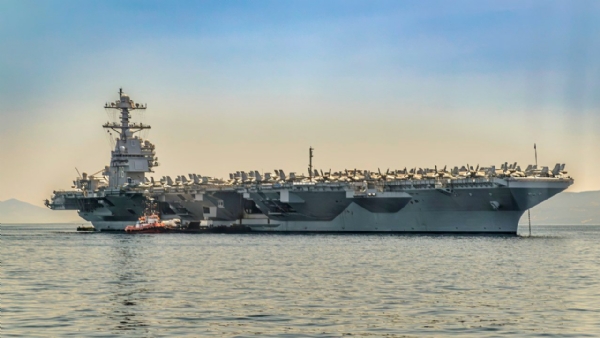
However, this does not guarantee that the PLAN will outmatch the U.S. Navy in wartime. The complexities of war make such predictions unreliable. The U.S. Navy boasts significantly more combat experience and time at sea than the PLAN. The United States also has a longstanding blue-water naval tradition that spans over two centuries, in contrast to China's naval history, which extends back less than three decades. A potential war between China and the United States would involve a joint effort, engaging air, ground, space, and cyber forces. The relative strength of each nation's capabilities in these domains, alongside factors such as strategy, leadership, and luck, would all play critical roles.
Uncertainties in China's Naval Ascent
Moreover, China's ascension to the top spot as the world's—or even the Pacific's—premier naval power is not guaranteed. Making long-term predictions based on historical data is inherently uncertain, especially when using open-source information about a secretive entity like the PLAN. The United States also holds various advantages—such as alliances, economic strength, and soft power—that are not reflected in an analysis focused solely on naval hardware.
Growing Threats and Strategic Implications
The United States could soon confront its first significant contender for maritime dominance since the collapse of the Soviet Union. China's increasing naval strength is already empowering Beijing to assert itself in the Pacific, posing risks to U.S. allies and regional stability. If the United States fails to address its relative decline, the world could face a more dangerous and uncertain future.
Not Ready for a Fight,Chinese Military Insecurities for Overseas Bases in Wartime
The People's Republic of China is brokering international access agreements to expand its security footprint overseas and extend the reach of the People's Liberation Army (PLA). While these bases' utility in peacetime is clear, their utility in wartime is less so.
These bases might pose to WORLD military interests through 2030
Chinese military writings suggest that the PLA has neither the intent nor the capability to use overseas military bases to launch pre-emptive attacks or other offensive operations on U.S. forces or interests through at least 2030. While Chinese overseas military basing remains important to monitor, the authors' research shows that Chinese bases overseas are unlikely to become threats to U.S. interests and forces during this time frame.
"Preventing the People’s Republic of China from Triumphing in the Grey Zone:
United States’ New Emergency in the China Sea" highlights a strategic dilemma faced by the United States in countering China's aggressive tactics in the South China Sea. It underscores the concept of "grey zone" conflict, where actions fall between peace and open warfare, allowing China to expand its influence without provoking a full-scale military response.
Asymmetric Warfare:
General H. R. McMaster notes that opponents of the US can choose between asymmetric warfare and foolishness. The PRC has wisely chosen the former.
China's strategy avoids direct confrontation with the superior US military by employing unconventional means.
China's Territorial Gains:
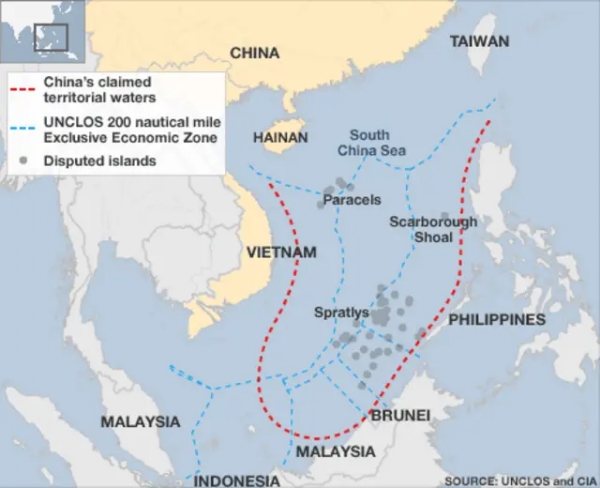
The PRC has achieved substantial control over many atolls, islands, reefs, and waters in the South China Sea through non-traditional means.
Rather than using the powerful People’s Liberation Army Navy (PLAN), China employs the People’s Armed Forces Maritime Militia (PAFMM) and the China Coast Guard (CCG).
Small Stick Diplomacy:
Coined by James R. Holmes, this term describes China’s use of smaller, less formidable vessels to assert its claims and perform sovereignty missions.
The PAFMM and CCG are key to China's strategy, engaging in harassment, intelligence gathering, surveillance, and presence missions.
Grey Zone Tactics:
China’s actions involve the use of unarmed force, including ramming vessels and using water cannons against ships from neighboring nations.
These tactics are aggressive but stop short of traditional armed conflict, placing them in the "grey zone".
Strategic Implications for the US:
The US and other affected coastal nations face difficulties in responding to these tactics without escalating to open conflict.
Washington must navigate these grey zone conflicts carefully to support its allies and uphold international maritime laws without provoking a larger confrontation.
Analysis:
China’s grey zone strategy is highly effective in the South China Sea, leveraging non-military means to achieve military and territorial objectives. This approach creates a challenging environment for the world, who must respond to aggression that doesn’t meet the traditional threshold of war.
The US needs to develop nuanced strategies to counteract these tactics. This could include bolstering the capabilities of regional partners, enhancing surveillance and intelligence operations, and employing legal and diplomatic channels to challenge China’s actions. The US might consider deploying similar small-scale assets to match China’s grey zone operations, thereby avoiding escalation while still maintaining a presence and contesting Beijing’s moves.
In summary, preventing China from triumphing in the grey zone will require a multifaceted approach, blending military readiness with diplomatic, economic, and informational tools to effectively counteract the PRC’s strategy without escalating to full-scale conflict.
Addressing China's 'Legacy' Chip Dominance with Targeted Measures
Focused Strategies Over Broad Import Bans
While Beijing's ambitions to lead in advanced microchips will likely falter due to U.S. export controls, China is positioned to potentially dominate the production of older semiconductor types. In the industry, “legacy” semiconductors are defined as chips of at least 20 nanometers; the smaller the size rating, the more advanced the chip. For chips in the 20-40 nm range, Chinese chipmakers, buoyed by generous subsidies, are projected to add production capacity exceeding the combined existing and planned production in Taiwan, the current top source of such chips.
Importance of Legacy Chips
These legacy chips remain crucial for a significant portion of the industrial base in wealthy economies, with applications ranging from electric vehicles (EVs) to Internet of Things (IoT) devices. While the U.S. and other nations should be cautious about becoming dependent on Chinese production in another sector, efforts to hinder China's progress in legacy chipmaking face significant challenges.
Challenges in Restricting China's Chipmaking
U.S. allies that host makers of chipmaking equipment and tools are unlikely to support extending export controls further. Additionally, China already can, or will soon be able to, produce much of the necessary equipment to manufacture these legacy chips.
A Targeted Regulatory Approach
A targeted regulatory response to China's investment in legacy chip capacity would best serve American interests. This approach would pave the way for sustainable investment in legacy chipmaking within the U.S. and allied countries, supporting present and future products like IoT devices and EVs. It would also foster common interests and cooperation with partner nations, proving more effective than broad tariffs given the complexity of international trade in intermediate goods like chips.
World At War-Lessons For India
Germany is thinking about bringing back conscription
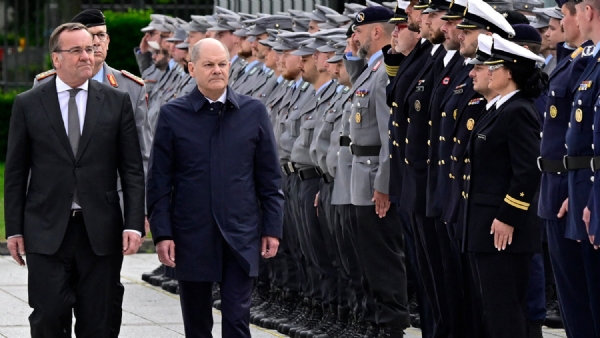
Like many of its nato allies, Germany is struggling to find enough willing recruits. The minister is among many who want Germany to consider restoring conscription, suspended since 2011, to get the numbers up.
Under plans drawn up in 2018 Germany aims to boost the Bundeswehr to 203,000 troops by 2031, up from around 181,000 today. This is a fraction of the size of the men under arms during the cold war. But the army is ageing and shrinking: given attrition, it needs to recruit 25,000 soldiers a year just to stand still. And Germany’s drum-tight labour market makes it hard for the Bundeswehr to compete with other employers. The situation is “really dire”.
Old and new lessons from the Ukraine War
If one sees the conflict as Ukraine’s ‘war of independence’, rather than focusing too much on borders, the Ukrainians are already victorious.
Putin had denied that Ukraine was a separate nation, but his behaviour has only strengthened Ukrainian national identity.
What else have we learned?
First, old and new weapons complement each other.
Second, nuclear deterrence works, but it depends on relative stakes more than capabilities.
Third, economic interdependence does not prevent war.
Fourth, sanctions can raise costs, but they do not determine outcomes in the short term.
Fifth, information warfare makes a difference.
Sixth, both hard and soft power matter
Seventh, cyber capability is not a silver bullet
Another lesson, then, is that once a war has begun, kinetic weapons provide greater timeliness, precision and damage assessment for commanders than cyber weapons do.
Finally, war is unpredictable
The promise of a short war is seductive. Putin certainly never expected to be bogged down indefinitely. He has managed to sell his war of attrition to the Russian people as a great patriotic struggle against the West. But the dogs he has unleashed could still turn around and bite him.
America’s War Machine Can’t Make Basic Artillery Fast Enough
The Pentagon focused on high-tech weapons after the Soviet Union fell, but the invasion of Ukraine has set off a race to revive output of time-tested munitions
Ground wars are still won with bullets and artillery shells; The US can’t make the latter fast enough
Russia’s invasion of Ukraine has evolved into a throwback to an earlier, ordnance-intensive era of warfighting—and the most important hardware on the battlefield is the 155 millimeter shell. At 2 feet tall, and weighing about 100 pounds (or a little more than half a meter and 45 kilograms), the shells are a standard munition among NATO countries. They also are in perilously short supply.
--
Bharati Web





